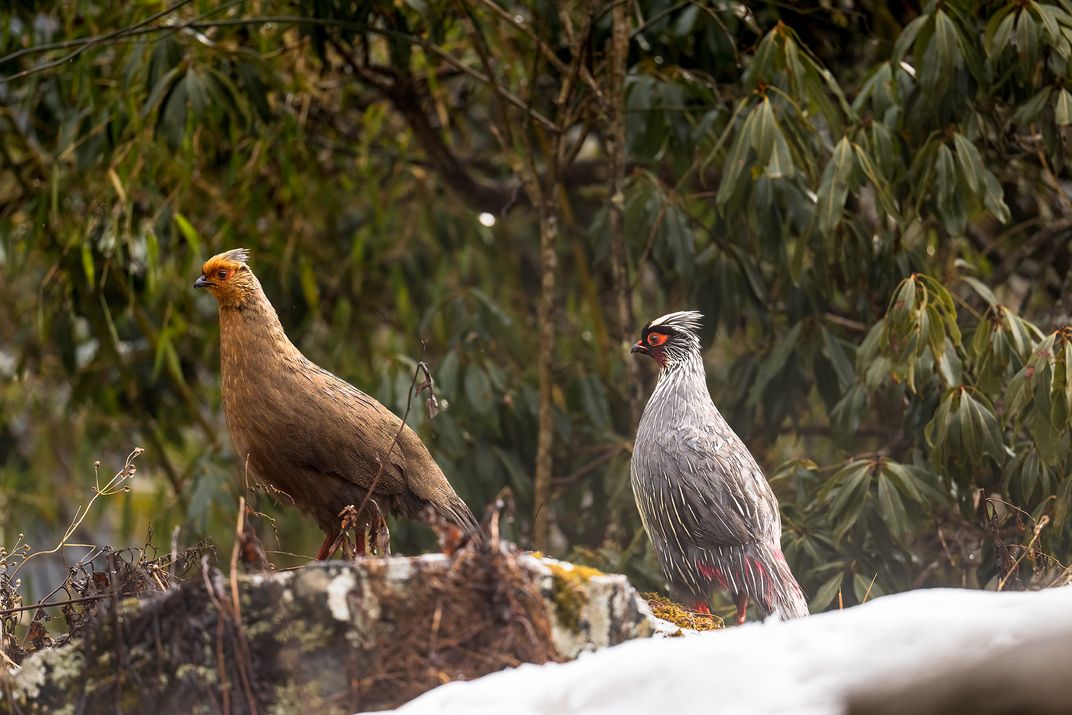The blood pheasant (Ithaginis cruentus), also known as blood partridge, is the only species in genus Ithaginis of the pheasant family. It is a relatively small, short-tailed pheasant that is widespread and is fairly common in eastern Himalayas, ranging across India, Nepal, Bhutan, China, and northern Myanmar, Tibet, and central and south-central China, where they prefer coniferous or mixed forests and scrub areas near the snowline. They move their range depending on the seasons, and are found at higher elevations during the summer. It eats moss, leaf litter and grass shoots and insects. The blood pheasant is "endangered" in India's list of wildlife. It has 15 different subspecies. It is the State bird of Sikkim. Size of adult male Blood pheasant is between 40 to 48 cm and the length of female is between is between 38 to 42 cm. The upperparts are dark ash or gray in color, with white shafts and green appearance and The underparts are light gray or white or dirty white, with some crimson shafts and paler appearance. The belly and sides feathers are lance-shaped, of various length, the tips green with crimson margins and yellow appearance, collectively resembling dashes of blood scattered on the breast and belly. Females are more uniformly colored. The body color of females is dull brown and often with some gray to the nape. In this PHOTO MALE AND FEMALE are searching food grain, grass seeds, fallen berries, shoots, tubers, termites, ants and insects beside snow on grass.
| Date Taken: | 02.2022 |
| Date Uploaded: | 10.2022 |
| Photo Location: | Gangtok, Sikkim, India, India |
| Camera: | NIKON Z 9 |
| Copyright: | © Apurba Das |

